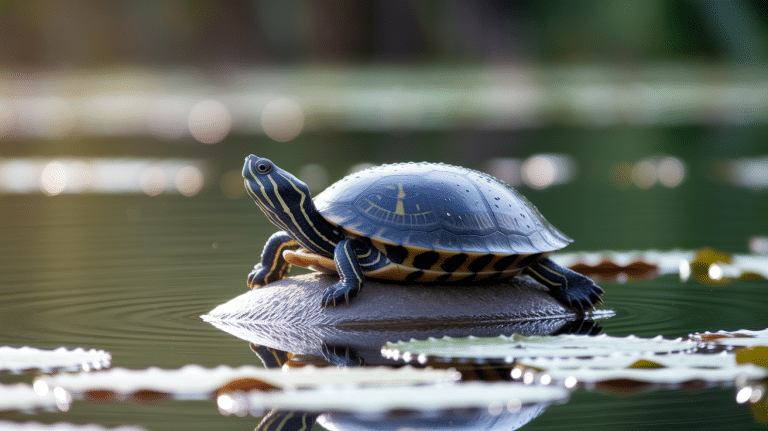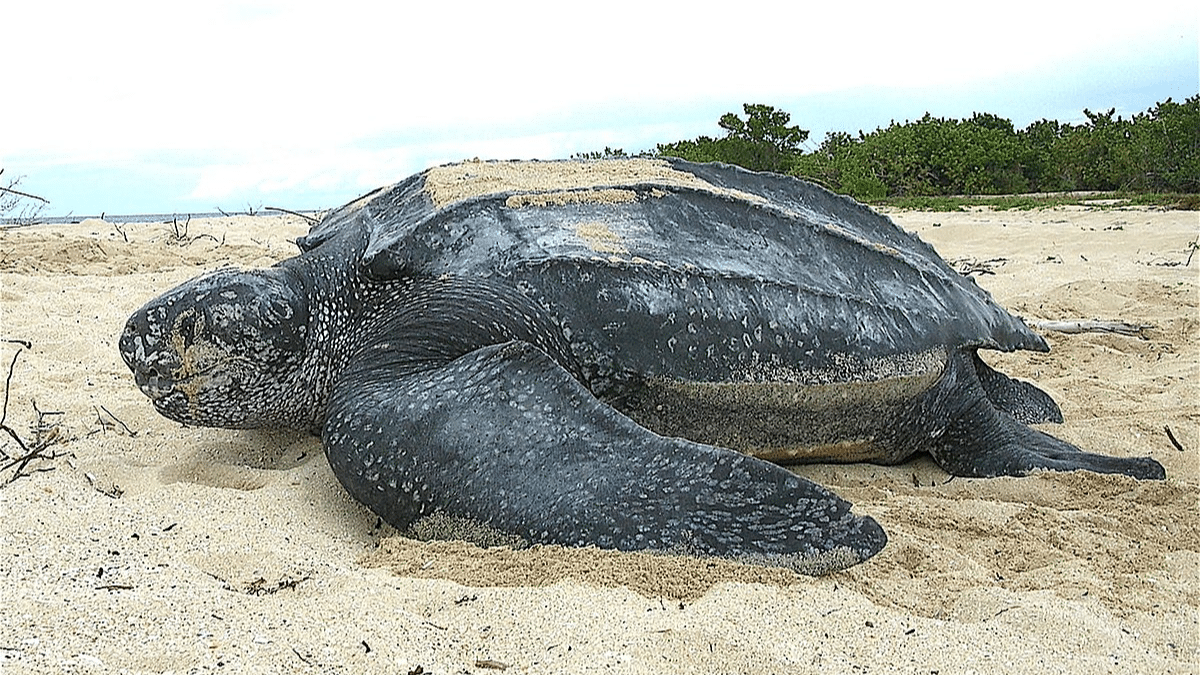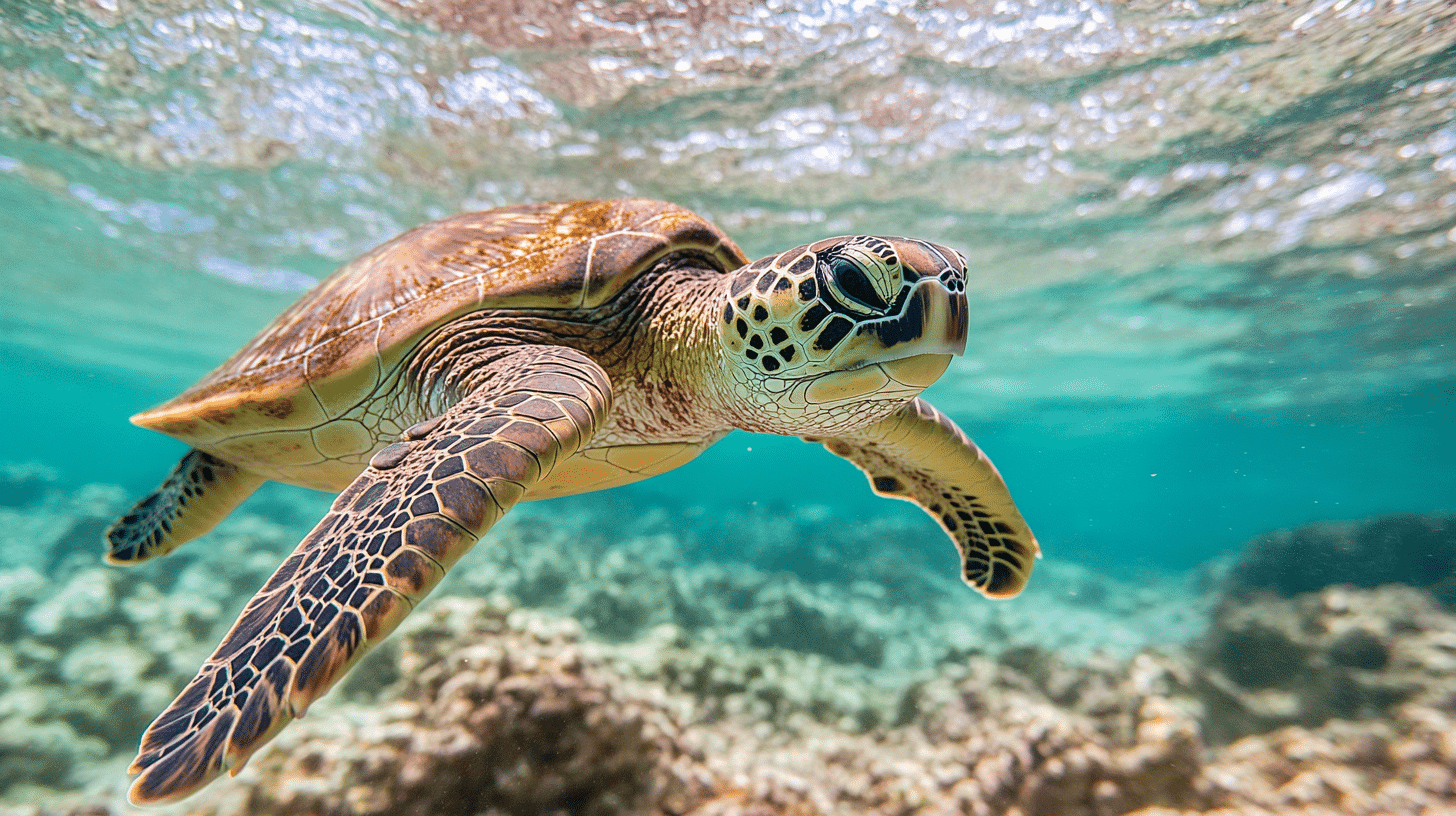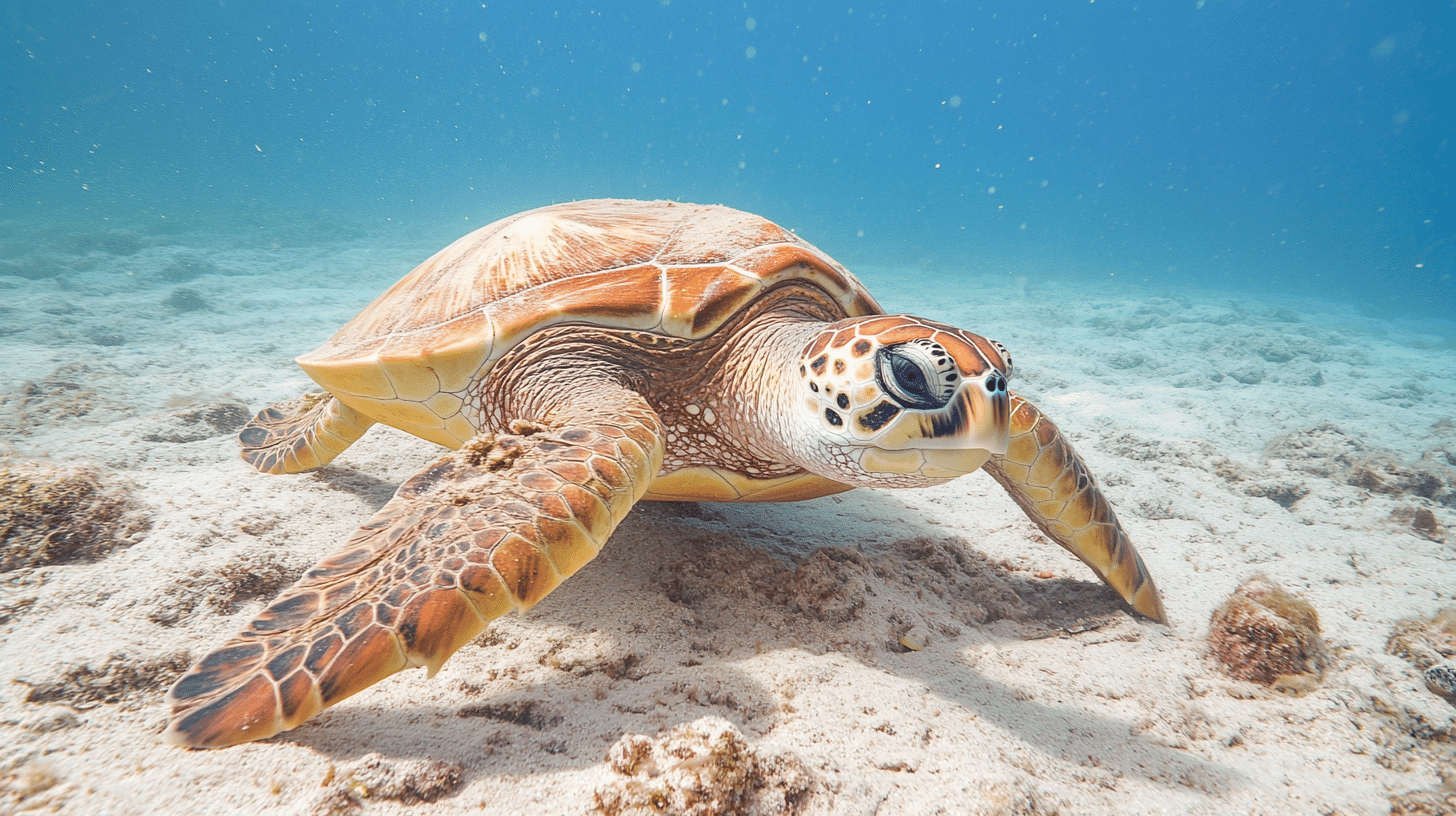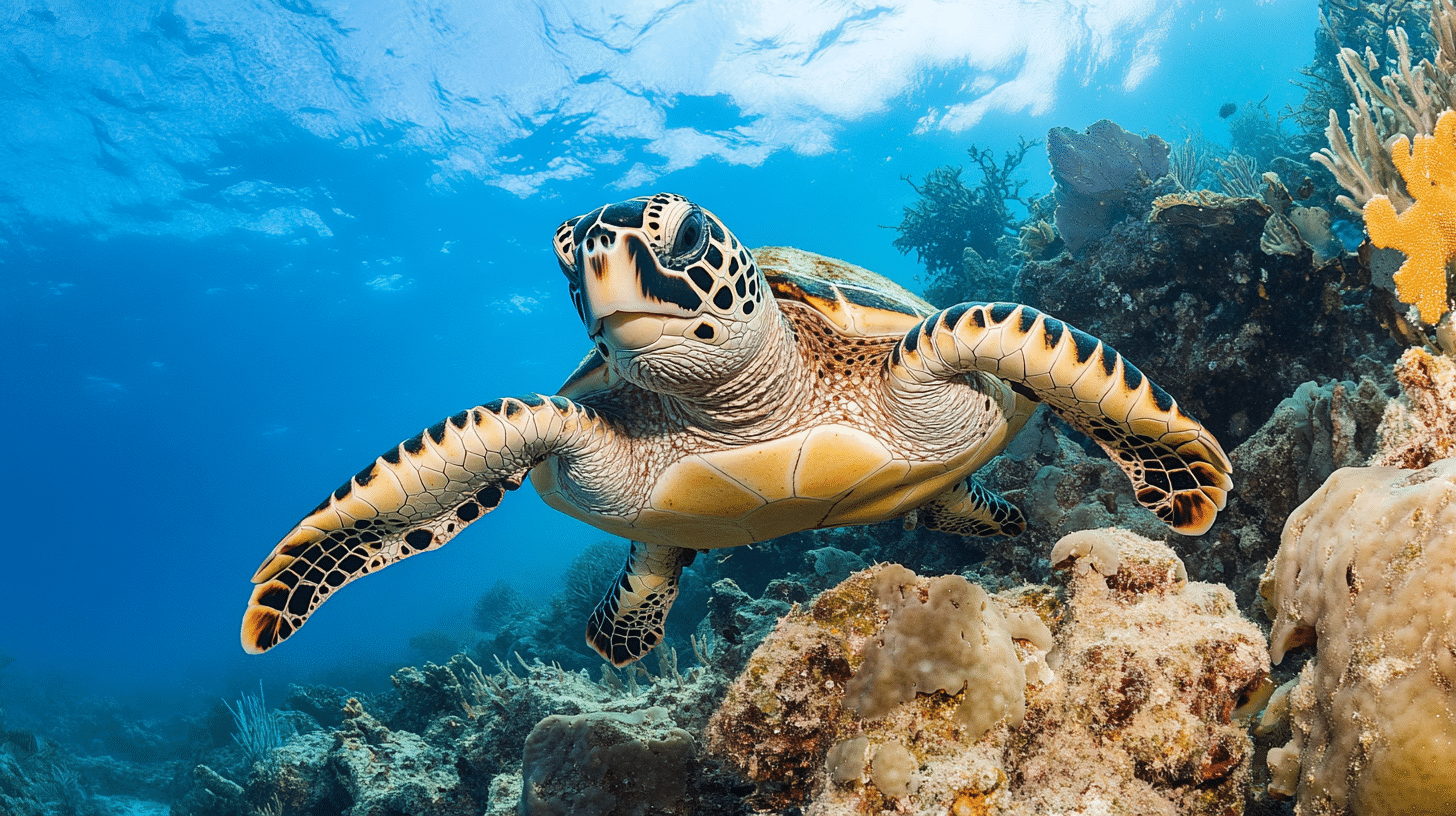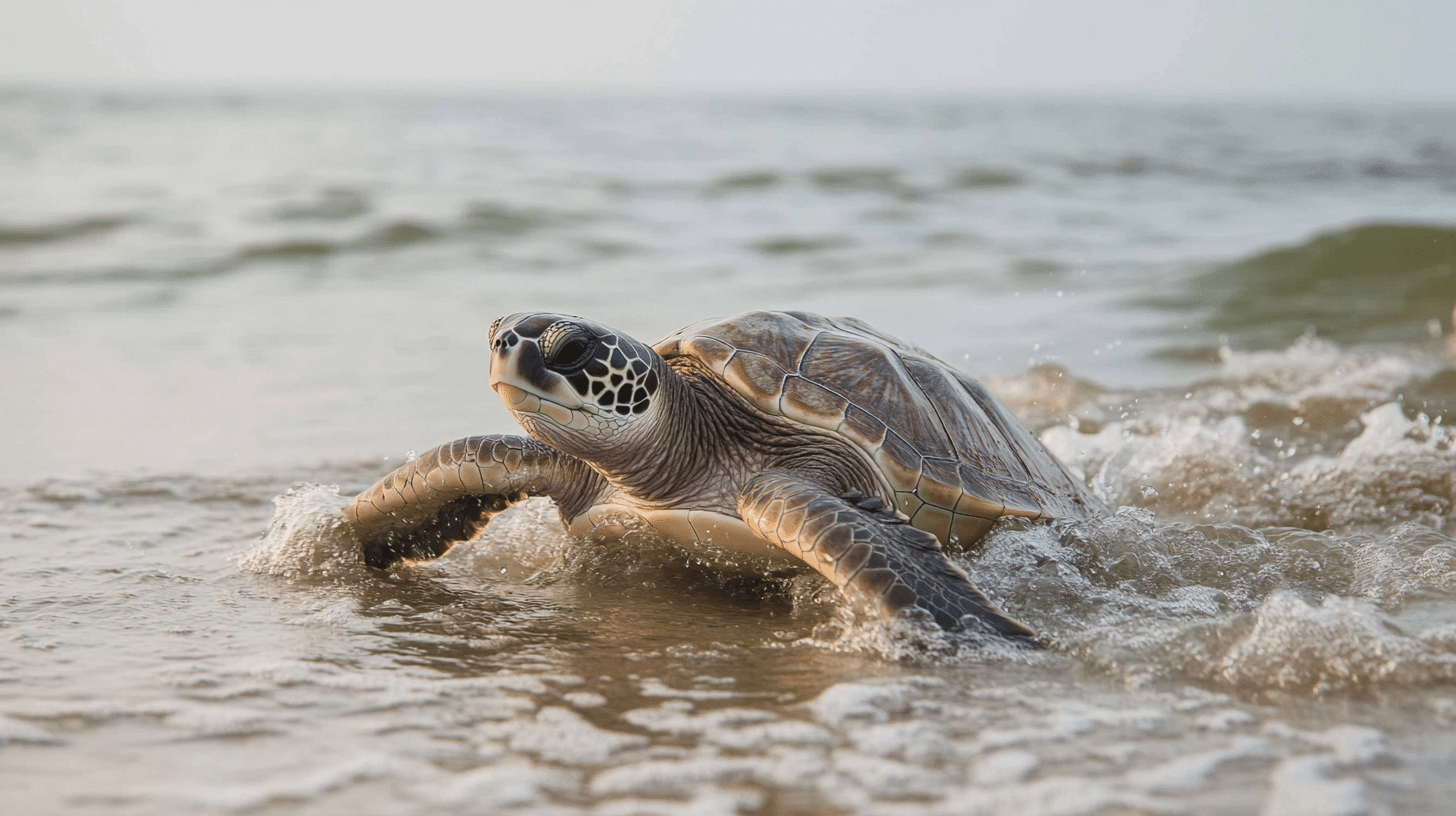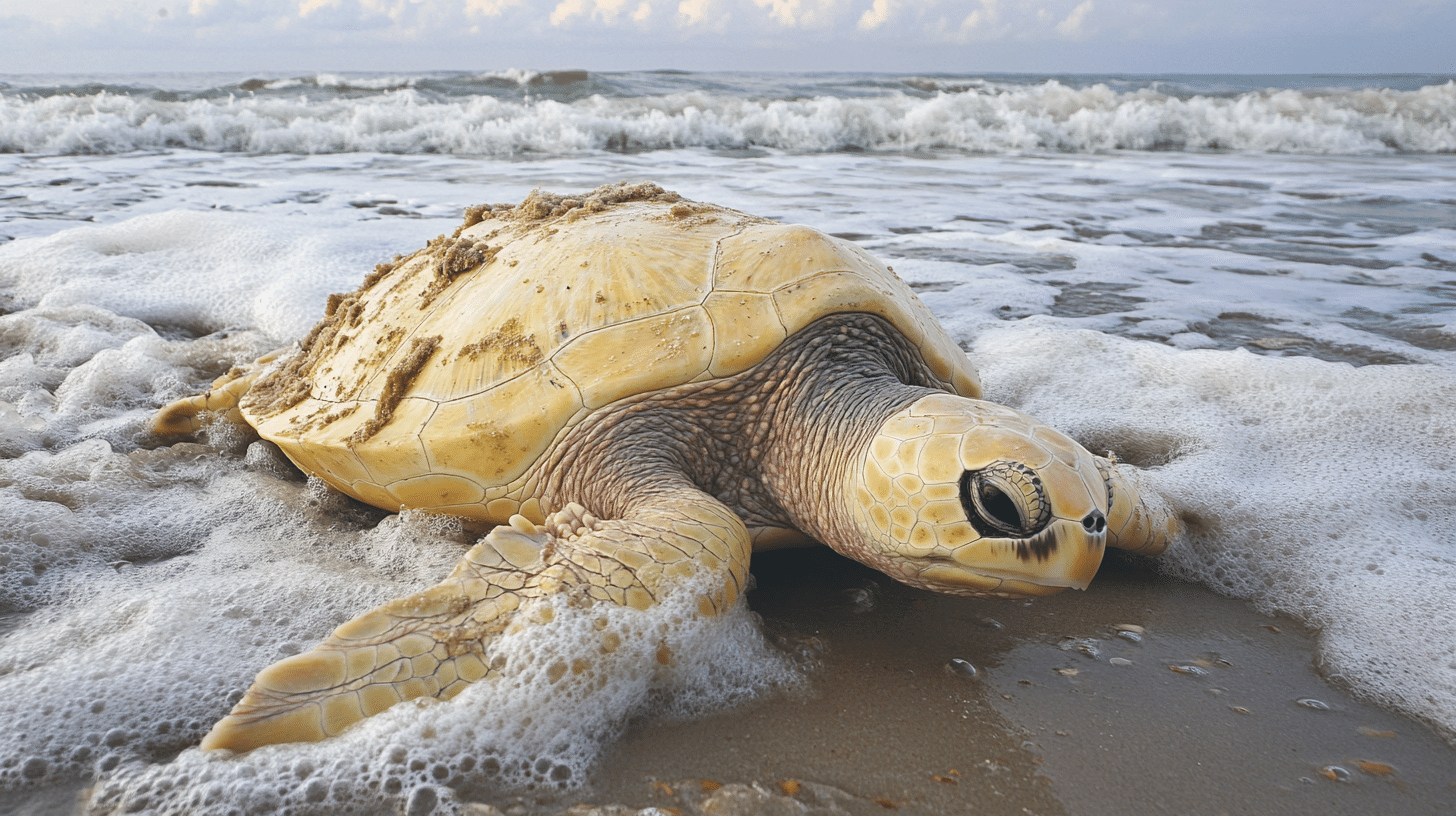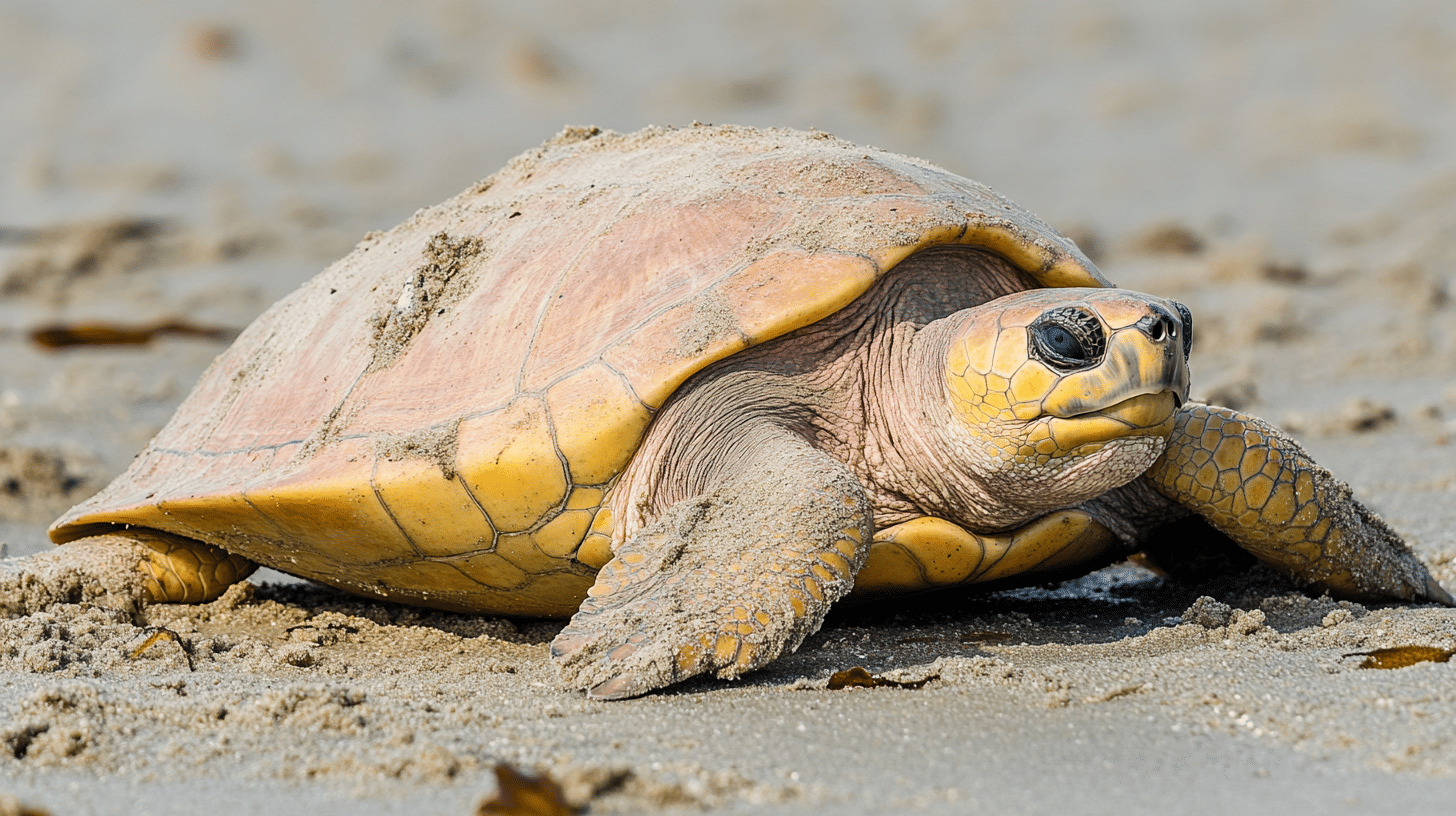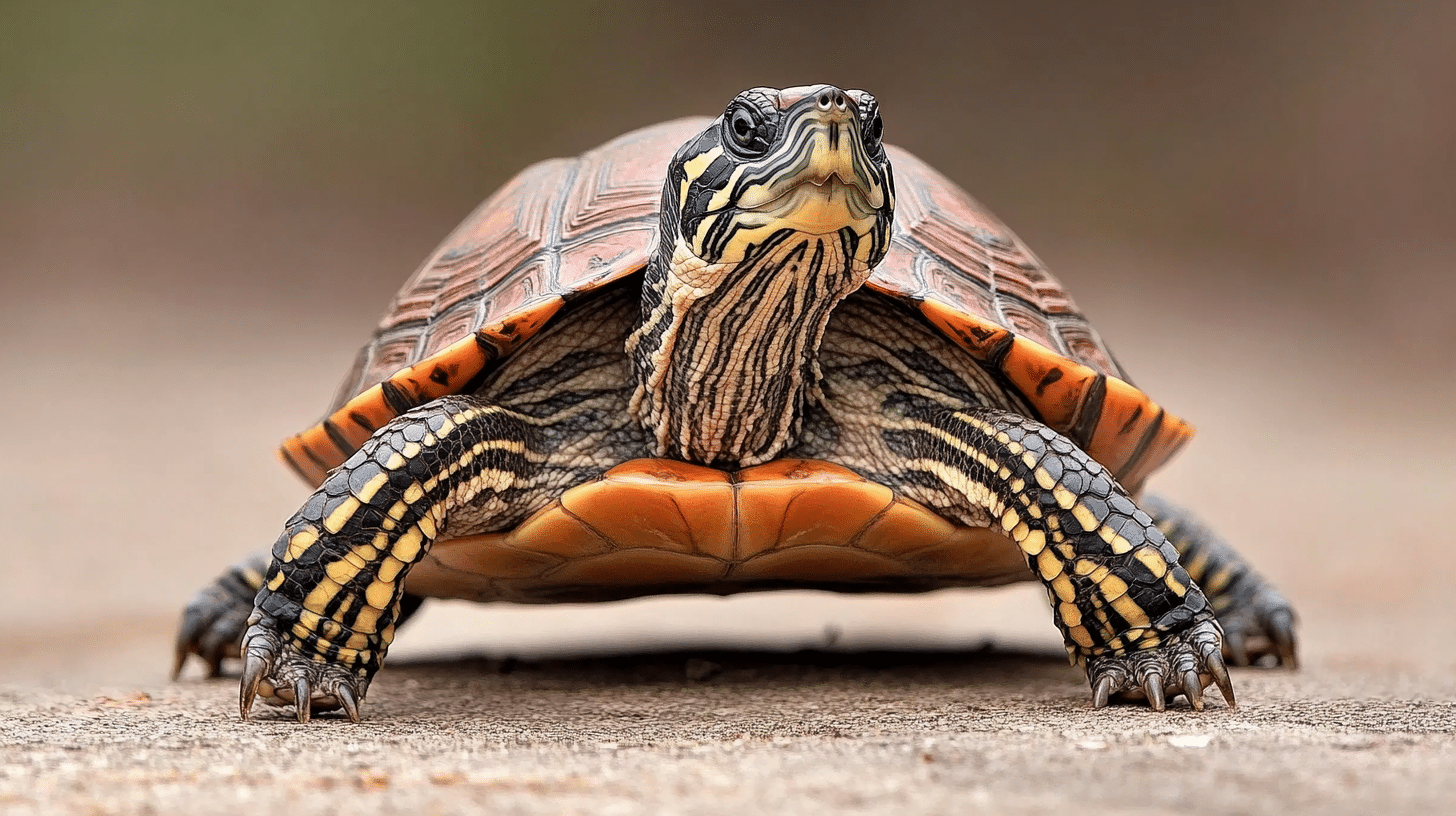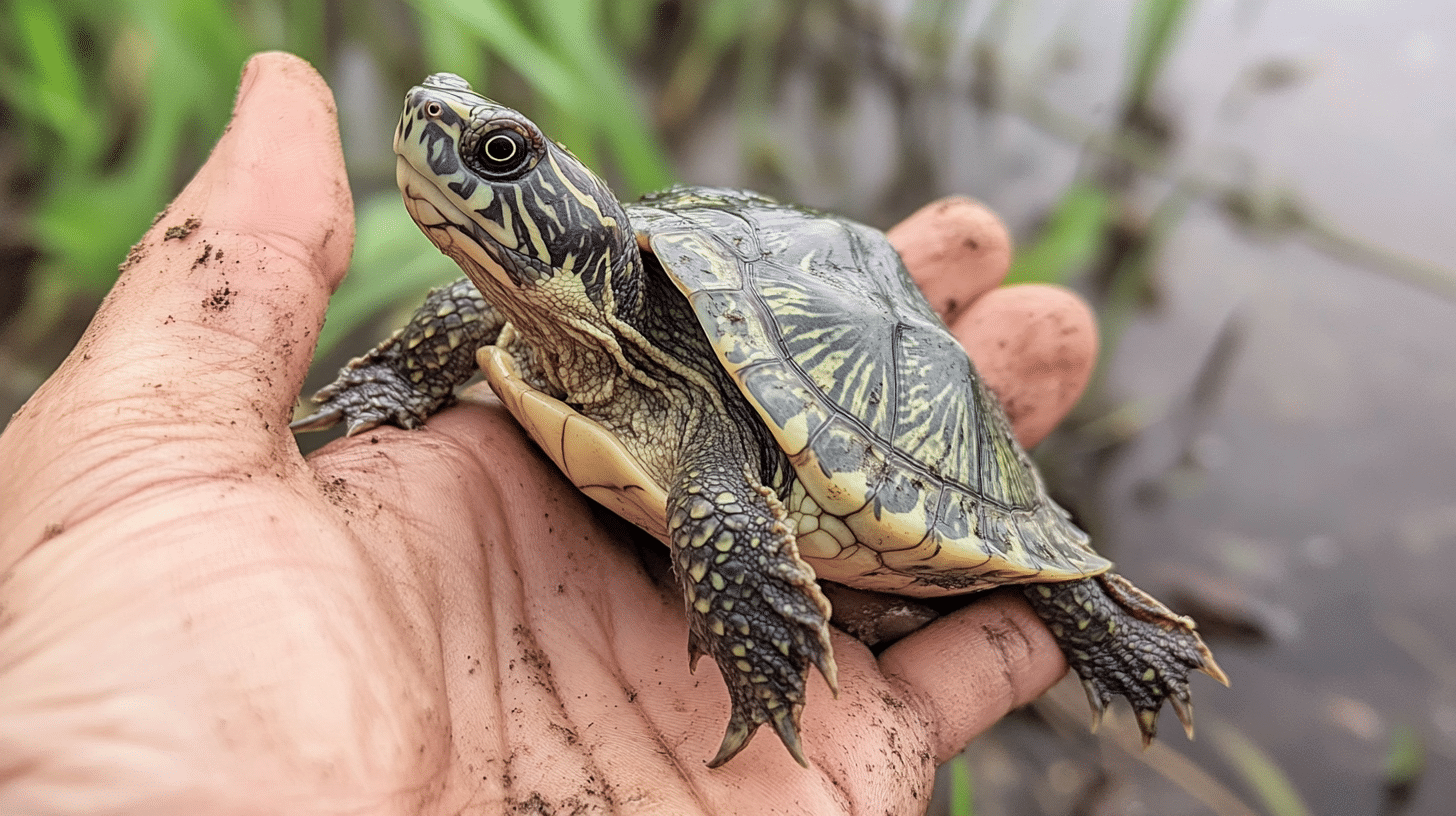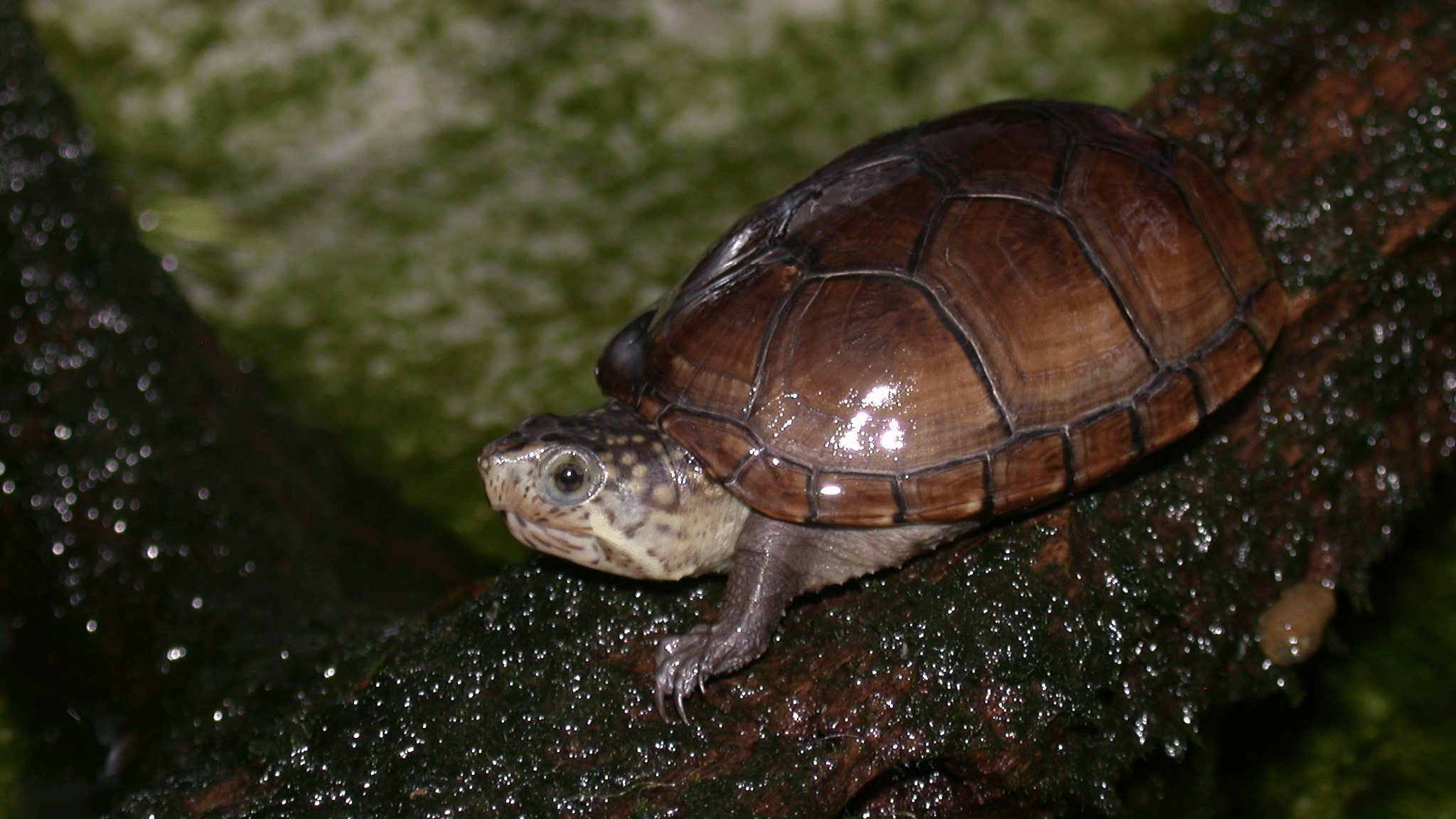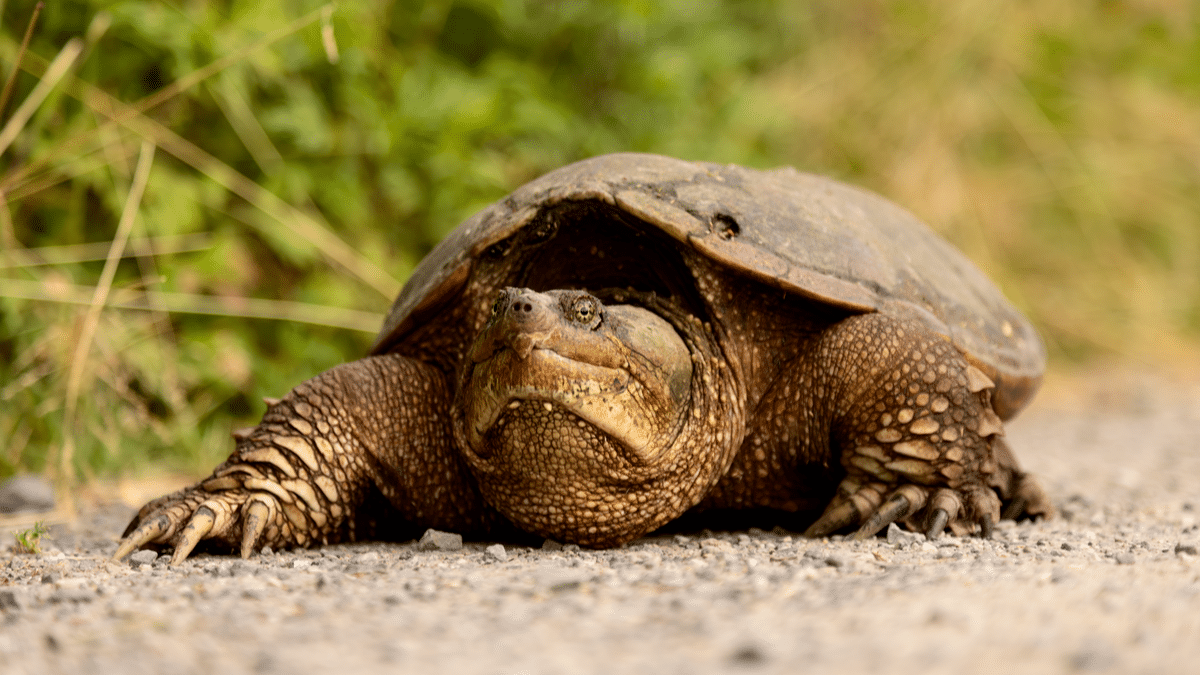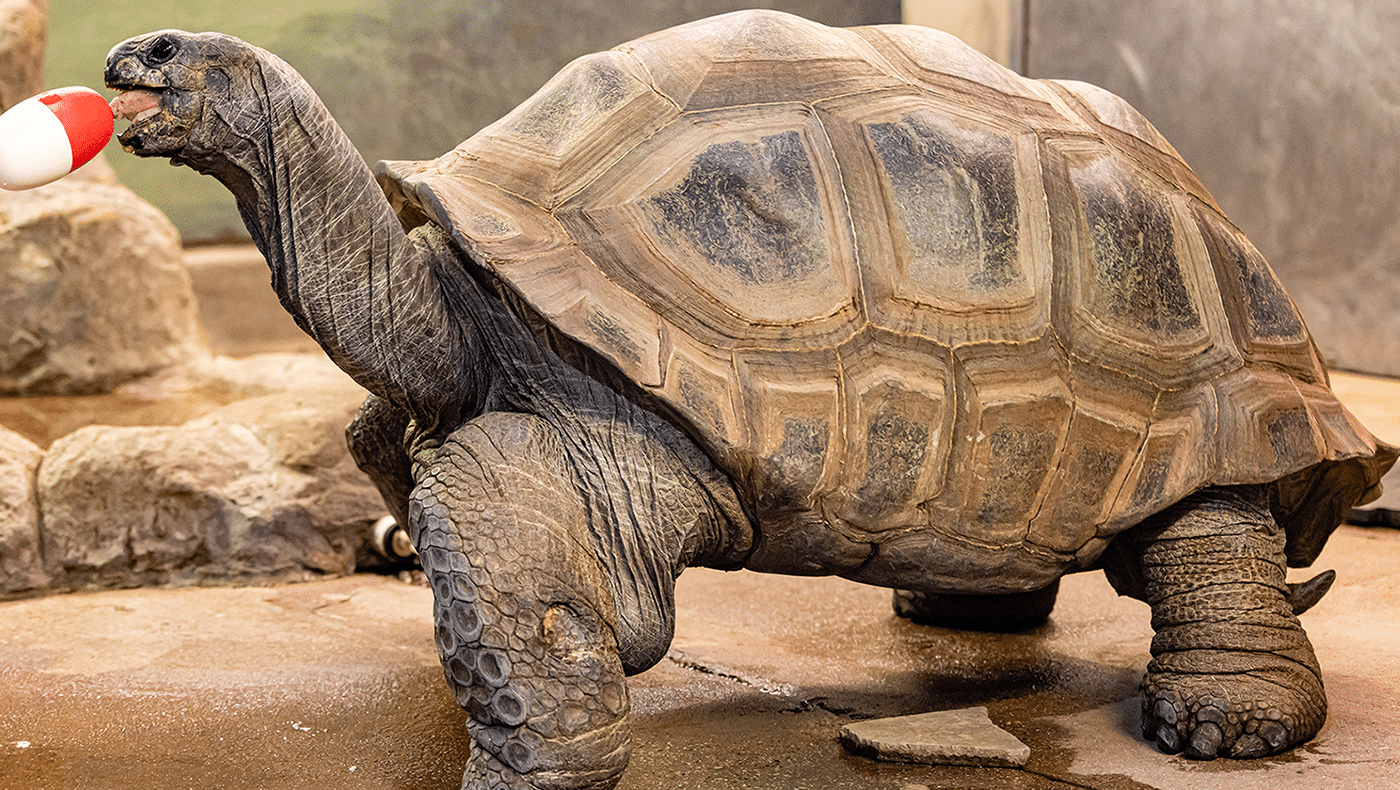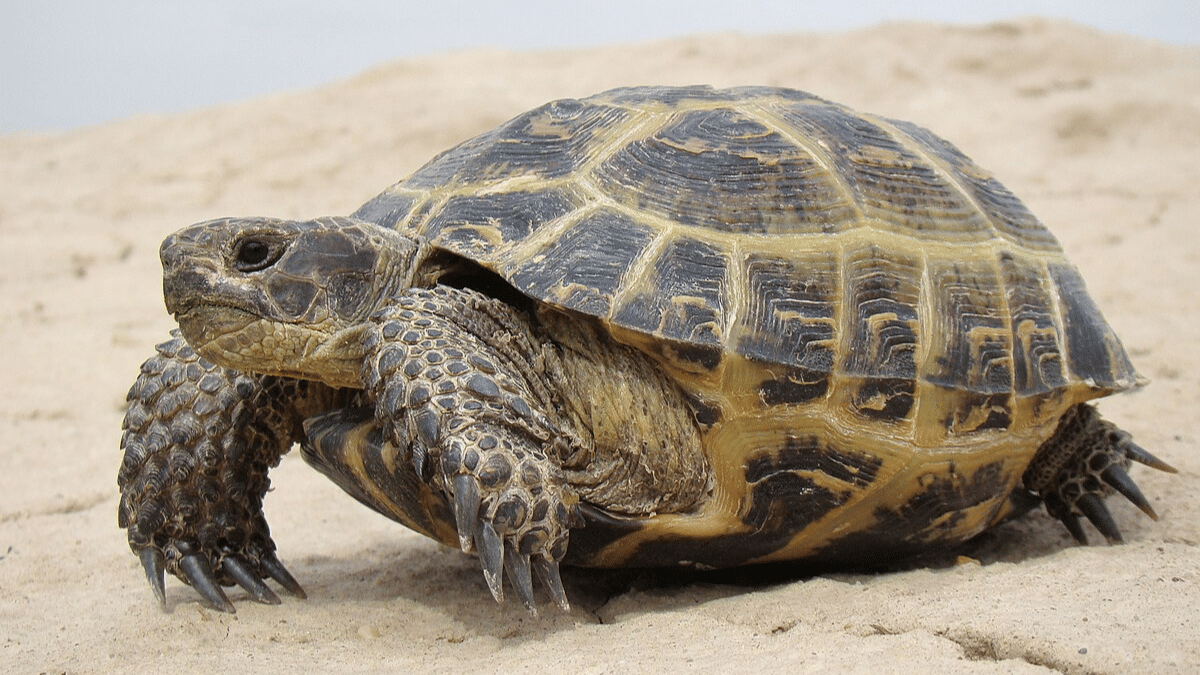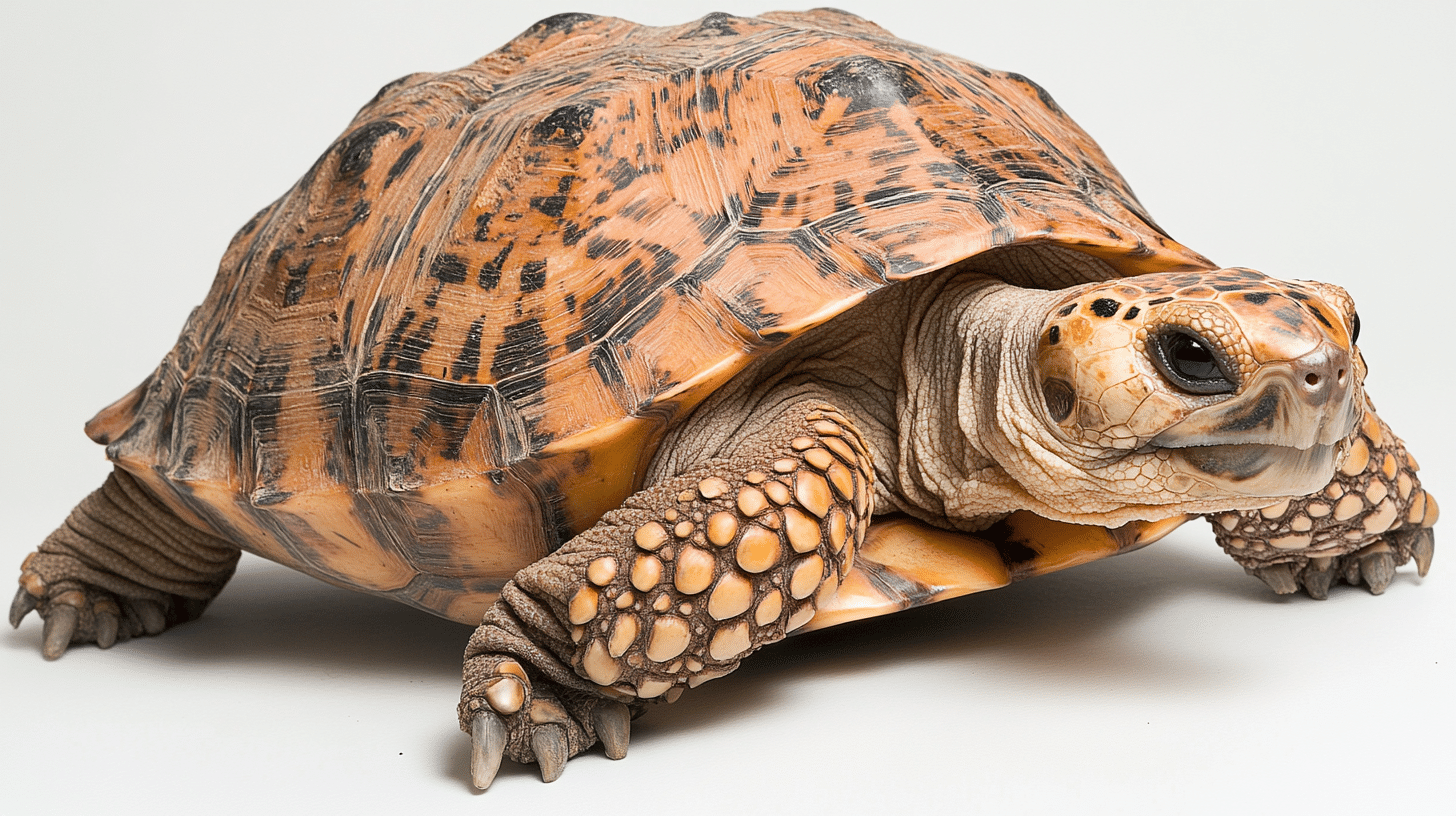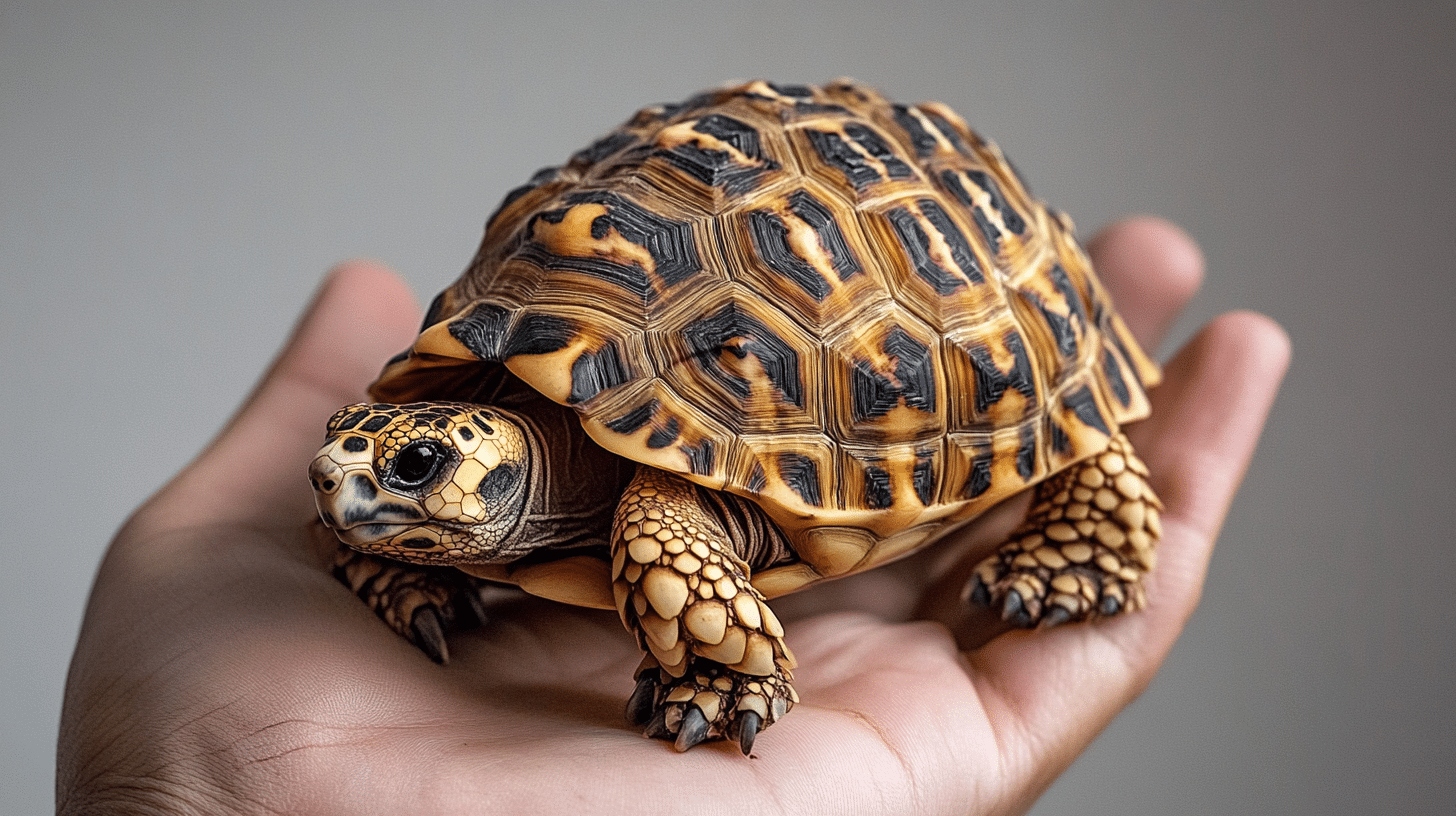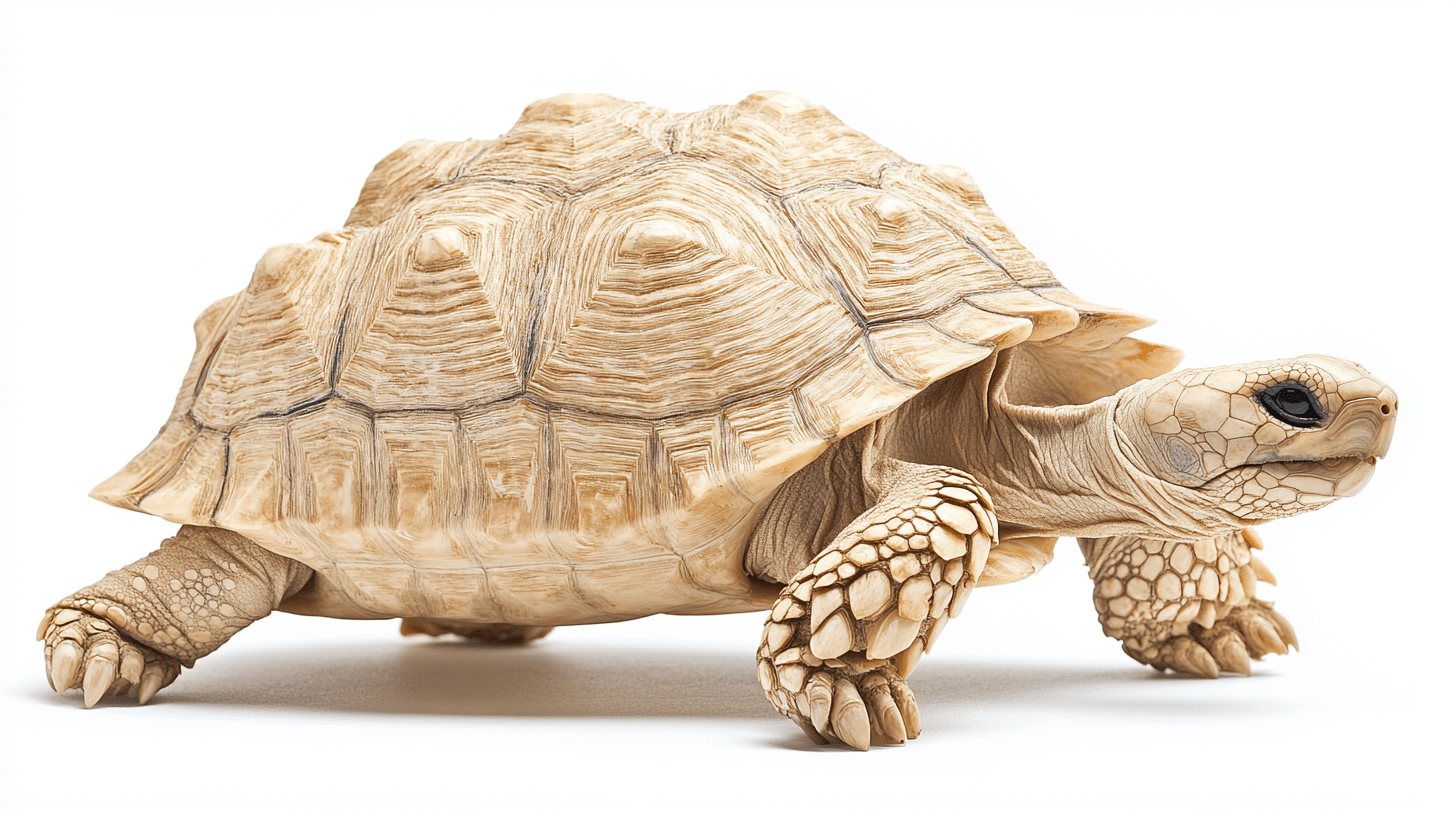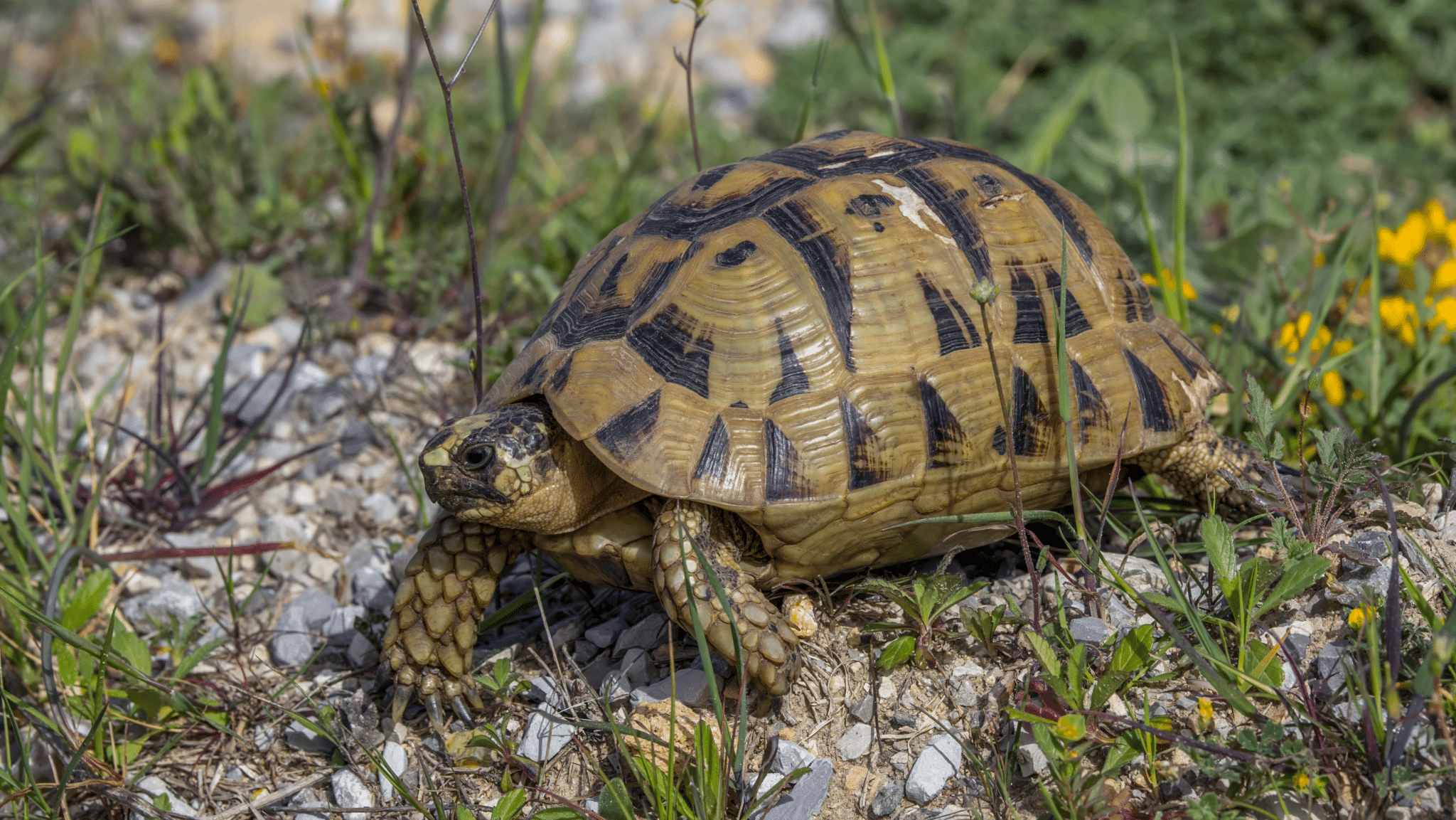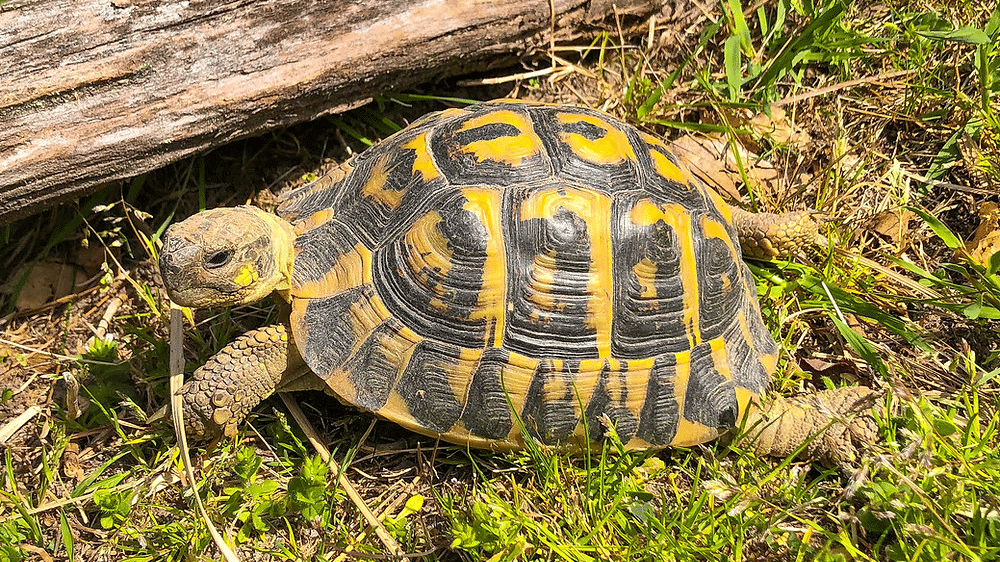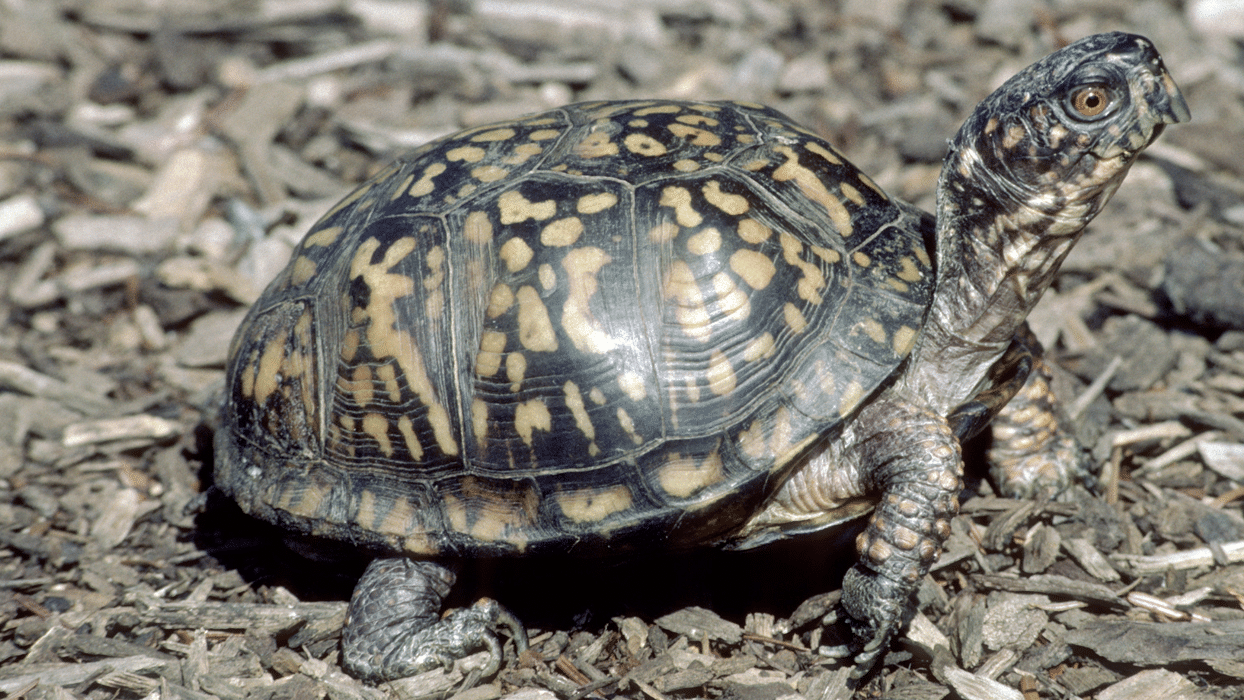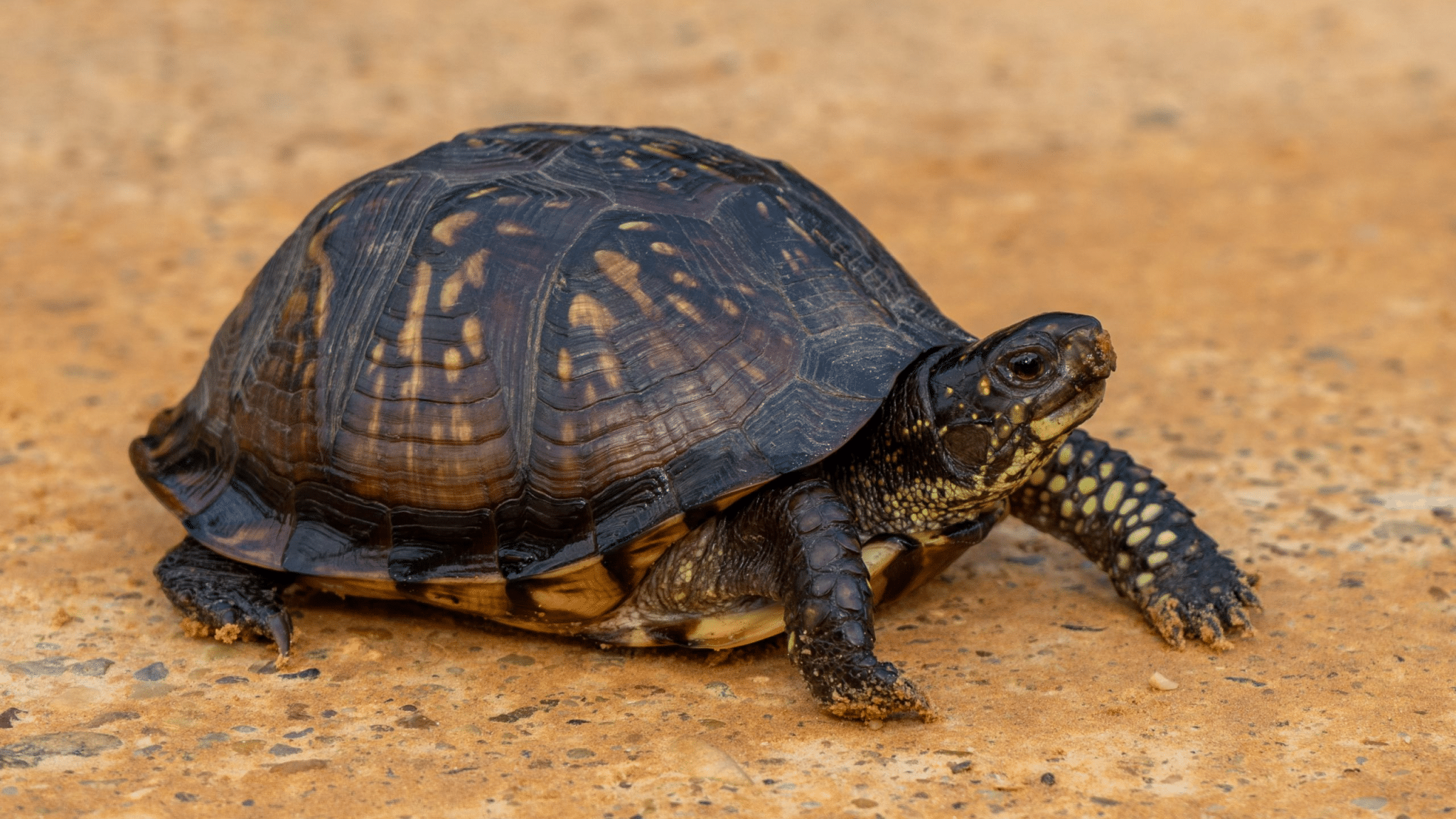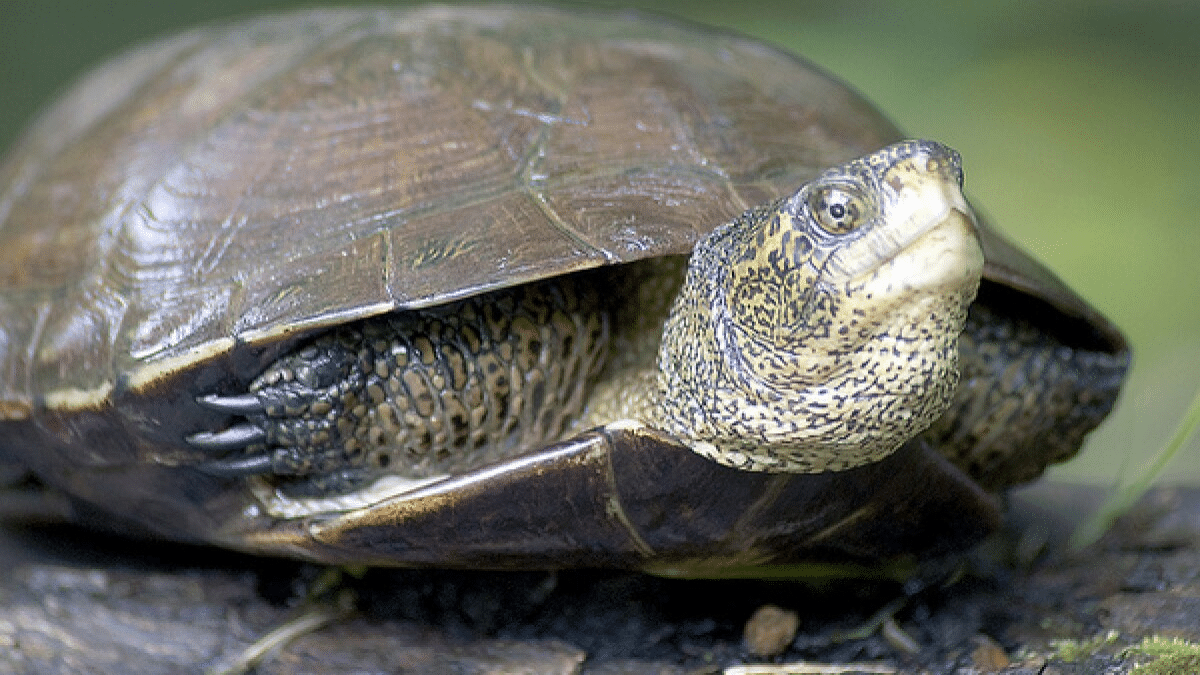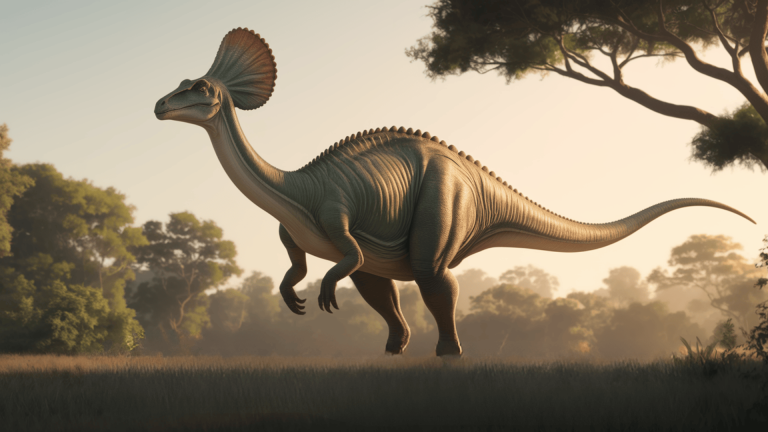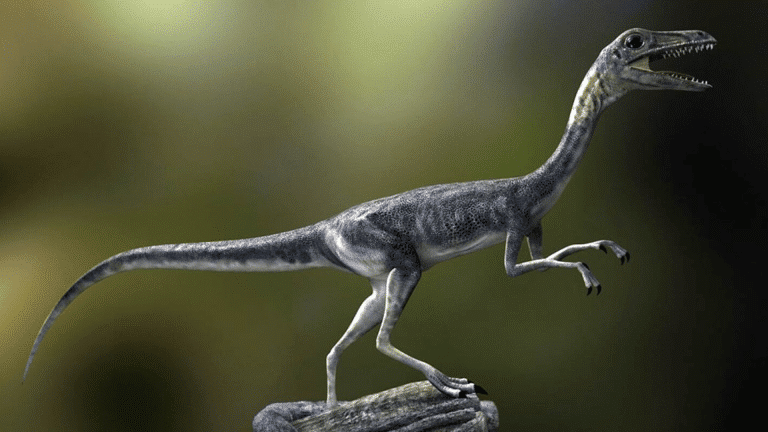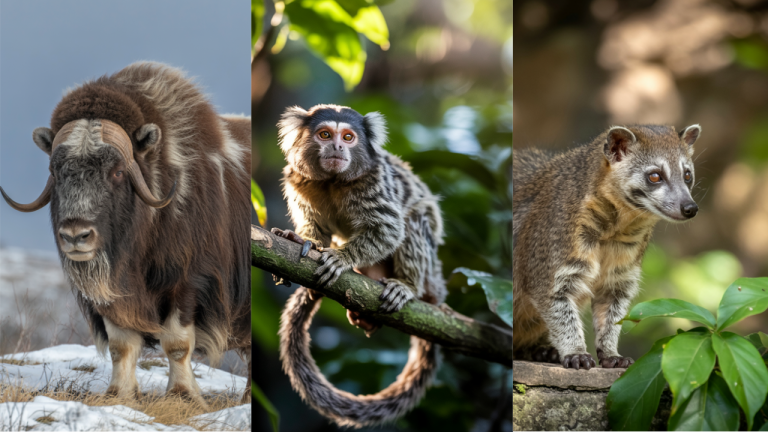Have you ever looked at a turtle and wondered how many different types exist in our world?
These incredible creatures are way more than just hard shells and slow movement.
Most people think turtles are all the same, but nature has created an amazing variety of shell-wearing friends. From tiny turtles that fit in your palm to giant ones that weigh hundreds of pounds, the turtle world is full of surprises.
This guide will reveal the rich world of turtles. We’ll show you how many types of turtles call our planet home, from sea dwellers to land explorers.
Prepare to meet nature’s most interesting and resilient shell-covered creatures, each with a unique story waiting to be told!
How Many Types of Turtles are there?
Turtles are fascinating creatures that can be found in many different environments, from the deep ocean to dry land. They come in a variety of shapes, sizes, and colors, and each type has its own unique characteristics.
Whether they’re swimming in the ocean, basking in the sun by a freshwater pond, or slowly moving across the land, turtles are truly special animals.
There are many types of turtles, and based on where they live and their lifestyle, they can generally be grouped into four main categories.
- Sea Turtles
- Freshwater Turtles
- Tortoises
- Box Turtles
In the following sections, we will get deeper into each type of turtle and learn more about where they live, what they eat, and what makes them unique.
Sea Turtles
These turtles live in the ocean. They are strong swimmers and spend most of their time in the water.
Some sea turtles, like the green sea turtle or the loggerhead turtle, are very large. They travel long distances in the ocean, sometimes crossing entire seas.
Sea Turtles are known for their strong flippers that help them move quickly through the water. Let’s find out each one of them:
1. Leatherback Sea Turtles
The leatherback sea turtle is the largest species of sea turtle and can be found in oceans around the world. Unlike other sea turtles, leatherbacks have a unique, leathery shell instead of a hard, bony one.
These turtles are known for their long migrations and can get to great depths in search of food, primarily feeding on jellyfish. They are capable of surviving in colder waters, which sets them apart from most other sea turtles.
| Feature | Details |
|---|---|
| Scientific Name | Dermochelys Coriacea |
| Average Size | 4-8 Feet in Length, 500-2,000 Lbs |
| What They Eat | Jellyfish, Sea Anemones, and Other Soft-Bodied Marine Creatures |
| Lifespan | 30-50 Years |
| Weight | 500-2,000 Lbs |
Fun Facts:
- Leatherback sea turtles are the largest living sea turtles and can weigh up to 2,000 lbs.
- Unlike other sea turtles, leatherbacks can get to depths of over 4,000 feet in search of food.
- They have a unique ability to maintain a higher body temperature than the surrounding water, which allows them to live in colder regions.
2. Green Sea Turtle
Green Sea turtles are large, herbivorous sea turtles found in tropical and subtropical oceans. They are known for their greenish-colored fat, which gives them their name.
Green sea turtles primarily feed on seagrass and algae and migrate long distances between their nesting sites and feeding grounds.
| Feature | Details |
|---|---|
| Scientific Name | Chelonia Mydas |
| Where Found | Tropical and Subtropical Oceans Worldwide |
| Weight | 300-400 Lbs |
| Size | 3-4 Feet in Length |
| Lifespan | 60-80 Years |
| Diet | Seagrass, Algae, and Marine Plants |
Fun Facts:
- Green Sea Turtles Are One of The Few Herbivorous Sea Turtle Species and Have a Diet Primarily Made up Of Seagrass.
- They Have Long Migrations, Traveling Hundreds of Miles Between Feeding and Nesting Areas.
- Their Greenish Fat Is the Reason for Their Name, Which Distinguishes Them from Other Sea Turtles.
3. Loggerhead Sea Turtle
Loggerhead Sea Turtles are large, strong turtles known for their large heads and powerful jaws. They are found in temperate and subtropical oceans worldwide, where they primarily feed on hard-shelled prey like Crabs, Mollusks, and Jellyfish.
| Feature | Details |
|---|---|
| Scientific Name | Caretta Caretta |
| Where Found | Temperate and Subtropical Oceans Worldwide |
| Weight | 200-350 Lbs |
| Size | 3-4 Feet in Length |
| Lifespan | 50-70 Years |
| Diet | Crabs, Mollusks, Jellyfish, and Other Marine Organisms |
Fun Facts:
- Loggerhead sea turtles have powerful jaws capable of crushing hard-shelled prey like Crabs and Mollusks.
- They are known for their long-distance migrations and can travel thousands of miles across Oceans.
- Loggerheads often nest in the same areas year after year.
4. Hawksbill Sea Turtle
Hawksbill Sea Turtles are small to medium-sized sea turtles with a distinctive pointed beak.
They are primarily found in tropical and subtropical waters, feeding on sponges and other invertebrates found on coral reefs. Hawksbills play a critical role in maintaining the health of coral reefs.
| Feature | Details |
|---|---|
| Scientific Name | Eretmochelys Imbricata |
| Where Found | Tropical and Subtropical Waters, Particularly Coral Reefs |
| Weight | 100-150 Lbs |
| Size | 2.5-3 Feet in Length |
| Lifespan | 30-50 Years |
| Diet | Sponges, Marine Invertebrates, and Some Jellyfish |
Fun Facts:
- Hawksbill sea turtles are critically endangered due to habitat loss, illegal trade, and overfishing.
- They have specialized beaks, which allow them to feed on sponges that other sea creatures cannot eat.
- Hawksbills are often seen in tropical coral reefs, where they play a vital role in maintaining the health of these ecosystems.
5. Olive Ridley Sea Turtle
Olive ridley sea turtles are small to medium-sized turtles known for their olive-colored shells.
They are found in tropical and subtropical oceans and are famous for their mass nesting events, during which thousands of females come ashore to lay eggs simultaneously.
| Feature | Details |
|---|---|
| Scientific Name | Lepidochelys Olivacea |
| Where Found | Tropical and Subtropical Oceans Worldwide |
| Weight | 80-100 Lbs |
| Size | 2-2.5 Feet in Length |
| Lifespan | 50-60 Years |
| Diet | Jellyfish, Crustaceans, and Other Marine Invertebrates |
Fun Facts:
- Olive Ridley Sea Turtles Are Known for Their Mass Nesting Events Called “arribadas,” Where Thousands of Turtles Come Ashore Simultaneously.
- They Have an Omnivorous Diet, Feeding Primarily on Jellyfish and Other Soft-Bodied Marine Animals.
- Olive Ridley Turtles Are One of The Smallest Sea Turtle Species and Are Known for Their Fast Swimming Ability.
6. Kemp’s Ridley Sea Turtle
Kemp’s Ridley Sea turtles are the smallest and most endangered species of sea turtle.
They are known for their unique nesting behavior, which occurs during the day and is concentrated on a few beaches.
Kemp’s Ridleys feed mainly on crabs, jellyfish, and other small marine animals.
| Feature | Details |
|---|---|
| Scientific Name | Lepidochelys Kempii |
| Where Found | Gulf of Mexico and The Southeastern United States |
| Weight | 80-100 Lbs |
| Size | 2-2.5 Feet in Length |
| Lifespan | 30-50 Years |
| Diet | Crabs, Jellyfish, Small Fish, and Marine Invertebrates |
Fun Facts:
- Kemp’s Ridley Sea Turtles are critically endangered due to habitat loss, poaching, and bycatch.
- They are the smallest sea turtle species, with an adult weight of around 100 lbs.
- Kemp’s Ridley turtles are known for their unique daytime nesting behavior, which sets them apart from other sea turtle species.
7. Flatback Sea Turtle
Flatback Sea Turtles are unique to Australia and are named for their relatively flat shells compared to other sea turtles.
These Turtles are found in coastal regions of Northern Australia and feed on a wide variety of foods, including soft corals, jellyfish, and sea cucumbers.
| Feature | Details |
|---|---|
| Scientific Name | Natator Depressus |
| Where Found | Coastal Regions of Northern Australia |
| Weight | 150-200 Lbs |
| Size | 3-3.5 Feet in Length |
| Lifespan | 30-50 Years |
| Diet | Soft Corals, Jellyfish, and Sea Cucumbers |
Fun Facts:
- Flatback Sea turtles are found only in northern Australia and are unique to that region.
- They are known to be highly adapted to their coastal environment, feeding on a variety of marine life.
- Unlike other sea turtles, flatbacks are less migratory and typically stay in the same region for most of their lives.
Freshwater Turtles
Freshwater turtles live in lakes, rivers, and ponds. They enjoy swimming and basking in the sun on rocks or logs. Examples of freshwater turtles include the red-eared slider and the eastern painted turtle.
These turtles are smaller than sea turtles and are great at moving around in both water and on land. let’s find out each one of them:
8. Red-Eared Slider
The red-eared slider is a popular freshwater turtle known for its distinctive red markings around its ears.
Found in ponds, lakes, and rivers, it is highly adaptable and can thrive in a variety of environments. These omnivorous turtles feed on plants, small fish, and invertebrates.
| Feature | Details |
|---|---|
| Scientific Name | Trachemys Scripta Elegans |
| Where Found | Ponds, Lakes, and Rivers in North America and parts of the world |
| Weight | 1-2 Lbs |
| Size | 8-12 Inches in Length |
| Lifespan | 20-40 Years |
| Diet | Plants, Small Fish, Insects, and Aquatic Invertebrates |
Fun Facts:
- Red-eared sliders are one of the most common pet turtles worldwide due to their adaptability and ease of care.
- They are skilled swimmers and can stay submerged for long periods.
- These turtles can live for decades in the wild and in captivity.
9. Eastern Painted Turtle
Eastern painted turtles are small, colorful freshwater turtles known for their vibrant markings. They are commonly found in slow-moving rivers, ponds, and lakes.
These omnivorous turtles feed on aquatic plants, small fish, and invertebrates. They are named for the beautiful red, yellow, and black markings on their shells and limbs.
| Feature | Details |
|---|---|
| Scientific Name | Chrysemys Picta Picta |
| Where Found | Eastern North America, particularly in ponds and lakes |
| Weight | 0.5-1.5 Lbs |
| Size | 6-10 Inches in Length |
| Lifespan | 30-40 Years |
| Diet | Aquatic Plants, Small Fish, and Invertebrates |
Fun Facts:
- The Eastern Painted Turtle is one of the most widespread turtle species in North America.
- They are known for their vibrant, multicolored markings, which are particularly striking in young turtles.
- These turtles spend a lot of time basking in the sun to regulate their body temperature.
10. Map Turtle
Map Turtles are known for the intricate patterns on their shells that resemble a map, which is where they get their name.
These freshwater turtles are found in rivers and lakes, primarily in the Southeastern United States.
They are primarily herbivores, feeding on aquatic plants, but will also eat small fish and invertebrates.
| Feature | Details |
|---|---|
| Scientific Name | Graptemys Spp. |
| Where Found | Southeastern United States, Typically in Slow-Moving Rivers and Lakes |
| Weight | 0.5-1.5 Lbs |
| Size | 8-12 Inches in Length |
| Lifespan | 20-30 Years |
| Diet | Aquatic Plants, Small Fish, and Invertebrates |
Fun Facts:
- Map turtles are highly aquatic and prefer to live in rivers with slow-moving water.
- They are known for the distinct, map-like patterns on their shells, which vary slightly between species.
- Map turtles are primarily basking turtles, spending much of their time out of the water on logs or rocks.
11. Yellow-Bellied Slider
Yellow-bellied sliders are a common freshwater turtle species known for the bright yellow markings on the underside of their shells.
They are found in a wide range of habitats, from ponds and lakes to slow-moving rivers.
They are omnivores, feeding on plants, small fish, and invertebrates.
| Feature | Details |
|---|---|
| Scientific Name | Trachemys Scripta Scripta |
| Where Found | Southeastern United States, Often in Freshwater Lakes and Ponds |
| Weight | 1-2 Lbs |
| Size | 8-12 Inches in Length |
| Lifespan | 30-40 Years |
| Diet | Aquatic Plants, Small Fish, Insects, and Invertebrates |
Fun Facts:
- Yellow-bellied sliders are highly adaptable and can thrive in both natural and artificial environments.
- These turtles are excellent swimmers and are often seen basking in the sun on logs or rocks.
- They are a popular species for pet ownership due to their calm temperament and ease of care.
12. Musk Turtle
Musk turtles, also known as stinkpots, are small freshwater turtles with a distinct odor they emit when threatened.
They are found in slow-moving waters such as ponds, lakes, and marshes. musk turtles feed on small invertebrates, fish, and plant matter.
| Feature | Details |
|---|---|
| Scientific Name | Sternotherus Odoratus |
| Where Found | Eastern United States, Typically in Slow-Moving Waters |
| Weight | 0.5-1 Lb |
| Size | 4-5 Inches in Length |
| Lifespan | 20-30 Years |
| Diet | Small Invertebrates, Fish, and Plant Material |
Fun Facts:
- Musk turtles are known for their ability to emit a foul-smelling musk when threatened, which is used as a defense mechanism.
- Despite their small size, they are excellent swimmers and are often found submerged in murky waters.
- They have a distinctive appearance with a dark, dome-shaped shell and long necks.
13. Mud Turtle
Mud Turtles are small, freshwater turtles that are often found in muddy ponds, lakes, and marshes.
They are named for their habit of burying themselves in the mud to hide from predators.
Mud turtles are omnivores, feeding on plants, small fish, and invertebrates.
| Feature | Details |
|---|---|
| Scientific Name | Kinosternon Spp. |
| Where Found | North and Central America, Typically in Slow-Moving Waters |
| Weight | 0.5-2 Lbs |
| Size | 4-7 Inches in Length |
| Lifespan | 20-30 Years |
| Diet | Plants, Small Fish, and Invertebrates |
Fun Facts:
- Mud turtles are often found in muddy or muddy-bottomed freshwater habitats where they can bury themselves to hide from predators.
- They are highly aquatic and spend much of their time submerged.
- These Turtles are often active at night, foraging for food in the dark.
14. Common Snapping Turtle
The common snapping turtle is one of the largest freshwater turtles in North America.
Known for their aggressive behavior and strong jaws, snapping turtles are found in a wide variety of freshwater habitats, including rivers, ponds, and lakes.
They are opportunistic feeders and will eat anything they can catch.
| Feature | Details |
|---|---|
| Scientific Name | Chelydra Serpentina |
| Where Found | North America, in Freshwater Habitats |
| Weight | 10-35 Lbs |
| Size | 8-14 Inches in Length |
| Lifespan | 30-40 Years |
| Diet | Fish, Amphibians, Insects, Plants, and Carrion |
Fun Facts:
- Common snapping turtles are known for their powerful jaws, which can deliver a strong bite.
- These turtles are excellent swimmers and often hunt by ambushing prey underwater.
- Snapping turtles are aggressive when threatened, and they will strike quickly to defend themselves.
15. Spiny Softshell Turtle
Spiny softshell turtles are large freshwater turtles known for their soft, leathery shells that are covered with small spines.
Found in rivers and lakes, these turtles are skilled swimmers and spend a lot of time submerged, using their long necks to reach for food like fish and aquatic invertebrates.
| Feature | Details |
|---|---|
| Scientific Name | Apalone Spinifera |
| Where Found | North America, Especially in Rivers, Ponds, and Lakes |
| Weight | 10-35 Lbs |
| Size | 8-20 Inches in Length |
| Lifespan | 30-50 Years |
| Diet | Fish, Invertebrates, Amphibians, and Plants |
Fun Facts:
- Spiny Softshell Turtles have a distinctive spiny, leathery shell that helps them blend into the muddy riverbeds.
- They are known for their ability to swim quickly and are often seen gliding through the water with minimal effort.
- These Turtles spend most of their time submerged, surfacing only occasionally for air.
Tortoises
Tortoises are land turtles. Unlike sea turtles and freshwater turtles, they don’t spend much time in the water.
They usually live in warm places, and some are very big, like the galápagos tortoise. Tortoises have heavy, thick shells that protect them from predators, and they are known for being very slow.
16. Galápagos Tortoise
The Galápagos Tortoise is one of the largest tortoise species in the world and is native to the galápagos islands.
Known for their long lifespan and massive size, these tortoises can weigh over 500 lbs.
They have a unique ability to adapt to the varying environments of the galápagos Islands, and different populations have different shell shapes depending on the island they inhabit.
| Feature | Details |
|---|---|
| Scientific Name | Chelonoidis Nigra |
| Where Found | Galápagos Islands |
| Weight | 250-500 Lbs |
| Size | Up to 4 Feet in Length |
| Lifespan | 100-150 Years |
| Diet | Grasses, Cactus, and Various Plants |
Fun Facts:
- Galápagos Tortoises can live for over 100 years, making them one of the longest-living animals on earth.
- They are known for their slow movement, and their shells have unique shapes depending on the region they inhabit.
- They played a key role in Charles Darwin’s studies on evolution.
17. Aldabra Giant Tortoise
The Aldabra giant tortoise is one of the largest tortoise species and is found on the Aldabra atoll in the Seychelles.
These tortoises are known for their massive size, slow movement, and long lifespan. They are herbivorous and feed on a wide range of plants, including grasses, leaves, and fruits.
| Feature | Details |
|---|---|
| Scientific Name | Aldabrachelys Gigantea |
| Where Found | Aldabra Atoll, Seychelles |
| Weight | 400-550 Lbs |
| Size | 3-4 Feet in Length |
| Lifespan | 100-200 Years |
| Diet | Grasses, Leaves, Fruits, and Flowers |
Fun Facts:
- Aldabra Giant tortoises are known for their remarkable ability to survive in harsh environments with limited food and water sources.
- These tortoises can live for over 100 years and are one of the longest-living tortoise species.
- They are highly social and often interact with each other in their natural habitat.
18. Russian Tortoise
The Russian Tortoise is a small, hardy species native to Central Asia.
These tortoises are known for their adaptable nature. They can thrive in a variety of environments, from deserts to grasslands.
Russian Tortoises are herbivores, feeding primarily on grasses, weeds, and leafy plants.
| Feature | Details |
|---|---|
| Scientific Name | Testudo Horsfieldii |
| Where Found | Central Asia, Including Russia, Afghanistan, and Parts of Iran |
| Weight | 5-10 Lbs |
| Size | 6-8 Inches in Length |
| Lifespan | 50-80 Years |
| Diet | Grasses, Weeds, Leafy Plants, and Flowers |
Fun Facts:
- Russian tortoises are one of the most popular species in the pet trade due to their small size and hardiness.
- They are known for their ability to withstand extreme temperature fluctuations.
- Russian Tortoises are primarily herbivores and require a diet rich in fiber and low in protein.
19. Leopard Tortoise
The Leopard Tortoise is a large, beautiful tortoise found in eastern and southern Africa. These tortoises are easily identified by their striking yellow and black patterned shells.
They are herbivorous and feed on grasses, shrubs, and cacti, and are well adapted to dry, arid environments.
| Feature | Details |
|---|---|
| Scientific Name | Stigmochelys Pardalis |
| Where Found | Eastern and Southern Africa |
| Weight | 40-50 Lbs |
| Size | 10-12 Inches in Length |
| Lifespan | 50-80 Years |
| Diet | Grasses, Shrubs, Cacti, and Leaves |
Fun Facts:
- Leopard tortoises are known for their distinctively patterned shells, which resemble the spots of a leopard.
- They are one of the largest tortoises in Africa and can live up to 80 years.
- These tortoises are active during the day and are often seen grazing on grasses and plants.
20. Indian Star Tortoise
The Indian Star tortoise is a small, striking species found in India and Sri Lanka.
Known for the star-like patterns on their shells, these tortoises are terrestrial and primarily feed on grasses, leaves, and fruits.
They are considered a vulnerable species due to habitat loss and the pet trade.
| Feature | Details |
|---|---|
| Scientific Name | Geochelone Elegans |
| Where Found | India, Sri Lanka |
| Weight | 10-12 Lbs |
| Size | 8-12 Inches in Length |
| Lifespan | 35-50 Years |
| Diet | Grasses, Leaves, and Fruits |
Fun Facts:
- Indian star tortoises are known for their striking, star-patterned shells, which are highly valued in the pet trade.
- They are primarily herbivores and require a high-fiber diet to stay healthy.
- These tortoises are native to dry, scrubby forests and grasslands in India and Sri Lanka.
21. Sulcata Tortoise (African Spurred Tortoise)
The sulcata tortoise, also known as the African Spurred Tortoise, is the third-largest tortoise species in the world.
Native to the Sahel region of Africa, sulcata tortoises are large, herbivorous reptiles that can live for over 70 years.
They are known for their strong, spurred legs and their burrowing habits.
| Feature | Details |
|---|---|
| Scientific Name | Centrochelys Sulcata |
| Where Found | Sub-Saharan Africa, Particularly in The Sahel Region |
| Weight | 70-100 Lbs |
| Size | 24-36 Inches in Length |
| Lifespan | 70-100 Years |
| Diet | Grasses, Weeds, and Leafy Plants |
Fun Facts:
- Sulcata tortoises are known for their burrowing behavior, creating extensive tunnel systems to escape the extreme heat of the African desert.
- They are one of the largest tortoises in the world and can grow to be over 3 feet long.
- These tortoises are herbivores and require a diet rich in grasses and low in protein.
22. Greek Tortoise
The Greek tortoise is a small, terrestrial species found in the Mediterranean region.
Known for their beautiful shell patterns, Greek tortoises are herbivores that feed on grasses, flowers, and shrubs.
They are often kept as pets due to their manageable size and docile nature.
| Feature | Details |
|---|---|
| Scientific Name | Testudo Graeca |
| Where Found | Mediterranean Region, including North Africa, Greece, and Turkey |
| Weight | 5-10 Lbs |
| Size | 6-10 Inches in Length |
| Lifespan | 50-100 Years |
| Diet | Grasses, Leaves, Flowers, and Shrubs |
Fun Facts:
- Greek Tortoises Are One of The Most Popular Pet Tortoises Due to Their Small Size and Peaceful Temperament.
- These Tortoises Are Native to Dry, Rocky Areas and Can Survive on A Diet of Grasses and Weeds.
- Greek Tortoises Are Often Seen Basking in The Sun to Regulate Their Body Temperature.
23. Hermann’s Tortoise
Hermann’s Tortoise is a small, colorful tortoise found in Southern Europe and parts of North Africa.
They Are Popular in The Pet Trade Due to Their Manageable Size and Docile Nature.
Hermann’s Tortoises Are Herbivorous and Live in Mediterranean Climates, Where They Feed on Plants, Leaves, and Grasses.
| Feature | Details |
|---|---|
| Scientific Name | Testudo Hermanni |
| Where Found | Southern Europe, Parts of North Africa |
| Weight | 5-7 Lbs |
| Size | 6-10 Inches in Length |
| Lifespan | 50-100 Years |
| Diet | Grasses, Leaves, Flowers, and Shrubs |
Fun Facts:
- Hermann’s Tortoises Are Known for Their Beautiful Shell Patterns, Which Vary Between Individuals.
- They Are Primarily Herbivorous, Feeding on A Variety of Plants in Their Native Mediterranean Habitats.
- Hermann’s Tortoises Are One of The Most Popular Pet Tortoises Due to Their Manageable Size and Calm Demeanor.
Box Turtles
Box Turtles are a special kind of turtle that can completely close their shells to protect themselves. They live in forests and grassy areas.
These turtles are known for their unique ability to hide inside their shells when they feel threatened. An example is the eastern box turtle.
Let’s find out each one of them:
24. Eastern Box Turtle
The Eastern Box Turtle is a terrestrial species found in the eastern United States.
Eastern box turtles, known for their colorful markings and domed shells, are often found in forests, fields, and wetlands.
They are omnivorous and have a slow pace of life, often hiding in their shells when threatened.
| Feature | Details |
|---|---|
| Scientific Name | Terrapene Carolina Carolina |
| Where Found | Eastern United States |
| Weight | 1-2 Lbs |
| Size | 5-7 Inches in Length |
| Lifespan | 50-100 Years |
| Diet | Insects, Fruits, Leaves, Mushrooms, and Small Invertebrates |
Fun Facts:
- Eastern Box turtles are known for their ability to close their shells completely to protect themselves from predators.
- They have a slow metabolism and are often active during the warm months, hibernating during colder seasons.
- These Turtles Have a Long Lifespan and Can Live for Decades in The Wild.
25. Three-Toed Box Turtle
The three-toed box turtle is a smaller species of box turtle found in the central and southeastern United States.
Characterized by three toes on each hind foot, these terrestrial turtles prefer areas with sandy soils, where they can dig and burrow easily.
| Feature | Details |
|---|---|
| Scientific Name | Terrapene Carolina Triunguis |
| Where Found | Central and Southeastern United States |
| Weight | 0.5-1 Lbs |
| Size | 4-6 Inches in Length |
| Lifespan | 50-75 Years |
| Diet | Insects, Fruits, Plants, and Small Invertebrates |
Fun Facts:
- Three-toed box turtles are known for their ability to dig and burrow into sandy soil to create shelters.
- They are often found in wooded areas, grasslands, and wetlands.
- Due to their more limited range, these turtles are not as commonly seen in the pet trade as other species.
26. Gulf Coast Box Turtle
The Gulf Coast Box turtle is a subspecies of the eastern box turtle and is found along the gulf coast of the United States.
Gulf Coast box turtles are known for Their Colorful Markings and preference for Wetlands and moist environments. They are Omnivorous and Can Live for Many Decades.
| Feature | Details |
|---|---|
| Scientific Name | Terrapene Carolina Major |
| Where Found | Gulf Coast Region of The United States |
| Weight | 1-2 Lbs |
| Size | 5-6 Inches in Length |
| Lifespan | 50-75 Years |
| Diet | Insects, Fruits, Plants, and Small Animals |
Fun Facts:
- Gulf Coast box turtles are often found near wetlands, swamps, and marshes, where they can find a variety of food.
- They are highly terrestrial and can live for several decades if properly cared for.
- These turtles are well-adapted to moist environments and are often seen near water sources.
27. California Box Turtle
The California Box Turtle Is a Small, Terrestrial Turtle Species Native to The Deserts and Woodlands of California.
They Are Known for Their Domed Shells, Which Help Protect Them from Predators.
They Are Often Found in Areas with Sparse Vegetation, Feeding on A Variety of Plants and Insects.
| Feature | Details |
|---|---|
| Scientific Name | Terrapene Ornata |
| Where Found | California, Primarily in Dry, Desert-Like Habitats |
| Weight | 0.5-1 Lb |
| Size | 5-7 Inches in Length |
| Lifespan | 50-75 Years |
| Diet | Insects, Fruits, Grasses, and Small Plants |
Fun Facts:
- California Box Turtles are highly adapted to dry environments and can survive in areas with limited water.
- They are known to be very shy and will often retreat into their shells when they sense danger.
- These turtles are commonly seen during the warmer months and tend to be more active in the spring and fall.
28. Ornate Box Turtle
The Ornate Box Turtle Is Known for Its Distinctive, Intricate Shell Patterns, Making It One of The Most Beautiful Box Turtles. Native to The Central United States, They Prefer Grasslands and Open Woodlands.
Ornate Box Turtles Are Omnivores, Feeding on A Variety of Plants, Insects, and Small Vertebrates.
| Feature | Details |
|---|---|
| Scientific Name | Terrapene Ornata |
| Where Found | Central United States |
| Weight | 0.5-1 Lb |
| Size | 5-6 Inches in Length |
| Lifespan | 50-75 Years |
| Diet | Grasses, Insects, Fruits, and Small Vertebrates |
Fun Facts:
- Ornate Box turtles are known for their bright, colorful shells, which have beautiful yellow and black patterns.
- They are often found in grasslands and can be seen foraging for food during the warmer months.
- These turtles are often active during the spring and fall and tend to hibernate in the winter.
Conclusion
Turtles are truly special creatures that show us how amazing nature can be. From tiny box turtles to giant sea turtles, each type has its own incredible story of survival and strength.
These shell-covered friends live in almost every part of our planet – from hot deserts to cool lakes, from deep oceans to quiet forests.
Each turtle has learned to survive in its own special way, proving how smart and tough nature can be.
But turtles need our help. Many are losing their homes and facing big challenges. By learning about these remarkable animals, we can appreciate their significance to our world.
Every turtle has a story, and each one matters. So the next time you see a turtle, take a moment to appreciate its existence.

